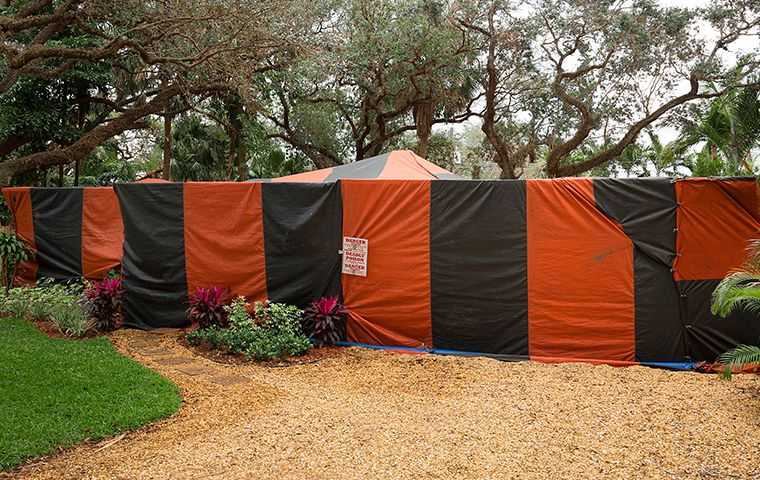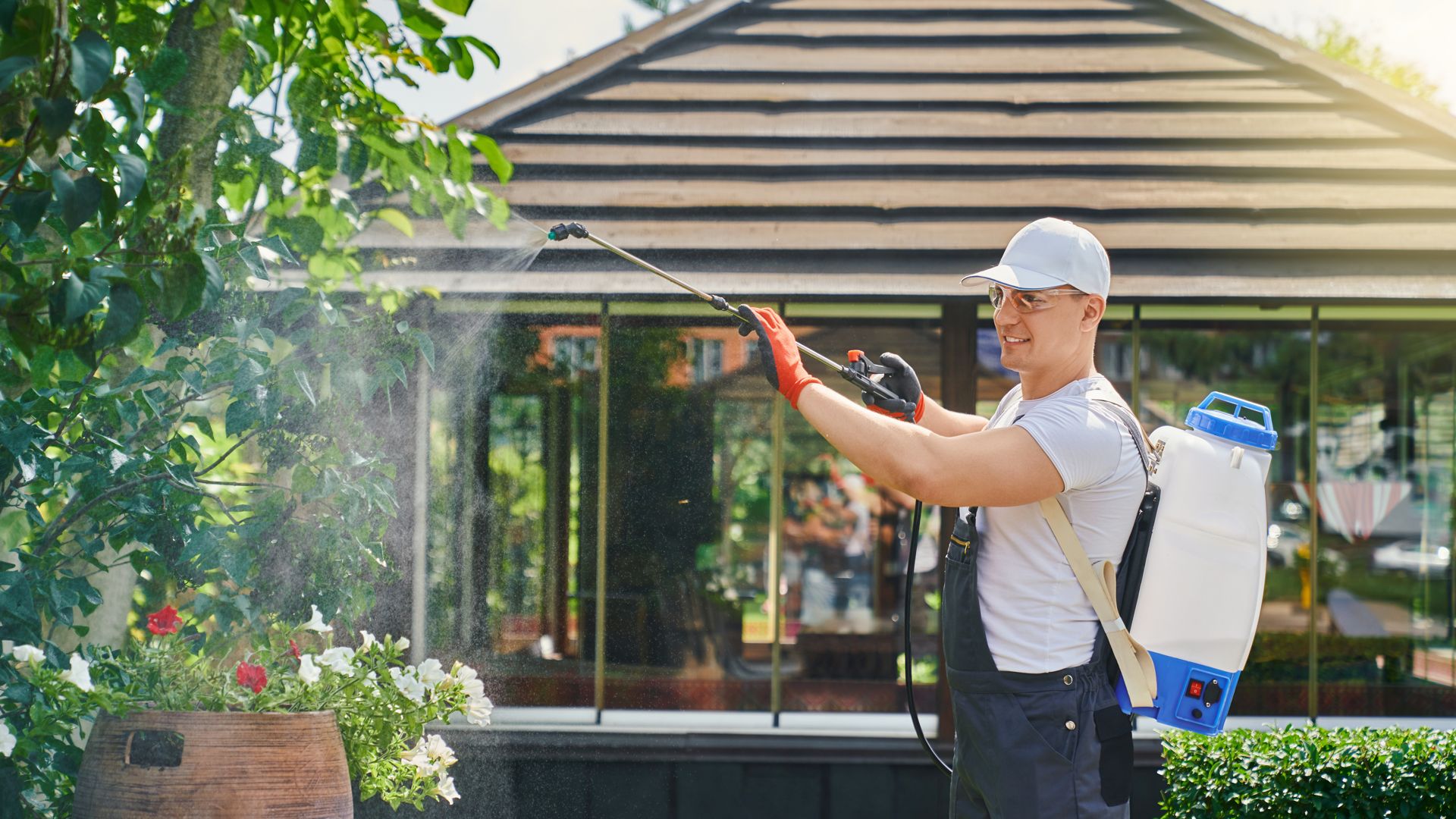
Defend Your Domain: The A-to-Z Of Fumigation For Pest Control For Orange County Homes

There is no better treatment than fumigation when it comes to sneaky and elusive pests like termites and bed bugs. But, of course, fumigation isn't the first option. If you have a small or isolated infestation, other methods may stop these pests and cost you less.
Today, we're going big or going home! In this article from The PEST Group, we'll discuss these two pest problems when they become large and out of control and how your local fumigator can provide a simple and effective solution, like flicking a reset switch. We'll also talk about what it looks like before you need fumigation, how to prepare for a fumigation treatment, what you can expect from your treatment, and how to ensure these pests don't come back.
If you're thinking, "My pest problem is bad; I know I need fumigation," remember that The PEST Group provides experienced termite and bed bug fumigation in Orange County. We can walk you through the process from start to finish. Jump to our Contact Us page to connect, or give us a call.
Understanding The Pest Menace: A Prelude To Fumigation
Termites and bed bugs are entirely different pests. There is no way to clump them together. So, let's give each of these pests its own section. Let's start by looking at how a bed bug infestation can have you scratching your head—and other parts of your body.
Bed Bugs:
If you wake up with three bites on your skin, and a rash surrounds those bites, you may have bed bugs in your home. Is it time to get a fumigation? Thankfully, no. The PEST Group offers targeted bed bug control for isolated issues, and when bed bugs first infest a home, they tend to stay in one location. A few bites on your skin may have a simple solution. So, what is the prelude to a fumigation? Over time, bed bugs will grow a population and spread through your house. The spread has begun if you find signs of them in more than one location. If you're waking up with a lot of tiny bites on your skin, that is another warning sign that you may need a pest fumigation.
Drywood Termites:
While fumigation can help address other kinds of termites, it isn't a complete solution. Subterranean and dampwood termites can continue entering the home through ground entry points. Termiticides or bait are often necessary to achieve full control. Drywood termites are different. They don't enter houses through the ground. Instead, they get inside through gaps and cracks in exterior walls or wood framing.
Once inside, drywood termites live indoors permanently. That means the infestation is entirely contained. If you catch these insects early, it is possible to treat infested areas directly with a foam treatment. But, when you start to see signs of a mature infestation, you may need a fumigation. What are the signs? The appearance of termite swarmers in your home or shed wings. Termite colonies take a long time to start producing swarmers. You may also tell a mature infestation by the amount of frass or wood damage you notice.
Safety First: How To Prepare For A Fumigation Treatment
Okay. You have a big bed bug infestation, or you're seeing warning signs of a mature drywood termite colony in your home. You know you need a fumigation. What comes next? Preparation! It is important to get ready for your fumigation because you want to make sure you get the results you want, and we want to make sure everything goes off without a hitch. Your safety is our highest priority.
Before your treatment, we give you a fumigation preparation checklist. The checklist is the same for bed bugs and drywood termites because it refers to the items in your home, not the pests. Here are a few items you'll see in the list:
- Make sure all pets are out of the house, including fish.
- Make sure you have accommodation for your family.
- Remove plants from the interior of your home.
- Trim plants away from the exterior of your house, leaving at least an 18-inch space.
- Remove food that is not in a sealed container.
We walk you through the process and help you understand all of the important steps. You don't have to worry about all of the details. We have extensive experience with fumigations. You're in good hands. We make sure everything goes as it should. But what does that mean? What do you get from your fumigation? At this point, you probably have some practical questions, such as, "How long does fumigation take?" Let's look at how we help you take back your space from these frustrating pests and what you can expect from the process.
Take Control Of Your Space: Contact Our Fumigation Experts
When you contact The PEST Group and connect with our fumigation experts, the process for bed bugs and termites will look very similar, with only a few minor differences. Here's what you can expect and how a fumigation deals with the pests in your home.
- We begin with an inspection to determine the extent of your infestation and if fumigation is warranted.
- We establish a targeted plan to treat every nook, cranny, and pore.
- We walk you through the preparation and prepare you for your treatment day.
- You must be out of the structure 24 hours before the treatment begins.
- The treatment lasts a total of 2 ½ to 3 ½ days. You'll need accommodations for your pets and lodging for yourself during this time.
- Bed bug fumigation is a comprehensive treatment that addresses bed bugs in all stages of development, including eggs. After the treatment, you won't have any bed bugs waiting to hatch in your home.
- A termite fumigation treats all the wood in your house and works its way into termite tunnels. Drywood termites have no place to hide from the treatment, which, once complete, will rid your home of all termites.
- If you get a bed bug fumigation, we'll share tips on how to avoid bringing bed bugs back with you after the treatment. These hitchhiking pests often ride home from hotels and motels inside bags or attached to your clothing.
- Once we finish and open the tent, the fumigation gas quickly escapes harmlessly into the air. We test to make sure the home is clear, and it's safe to return.
After the tent is gone and your home is yours again, what comes next? It depends on the pest we treat. Bed bugs and drywood termites are quite a bit different. Let's take a look at each and discuss some methods that can help you prevent future infestations.
Post-Fumigation Maintenance: Keeping Pests At Bay
After your fumigation services, you will want to make sure these pests don't come back. We get it. So, we not only provide advice for preventing these pests but also professional control options if you are interested. Let's start again with bed bugs since they are the hardest to prevent.
Bed bugs are difficult to keep out of a home because they are usually carried inside on personal belongings accidentally. The exception is if you live in an apartment or condo where you share walls with another dwelling and where bed bugs can pass through the walls. But in most cases, prevention is about catching bed bugs before they get in.
Here are some effective preventative methods you can take:
- Do a quick inspection of your room when staying overnight somewhere away from home.
- Store your laundry in a sealed bag.
- When opening your luggage, do so on a luggage rack up off the floor if possible.
- Store luggage high.
- Keep watch for bed bugs when at work or school.
- Refrain from putting bags or briefcases next to similar items owned by others.
- Always inspect the furniture and clothing that you buy secondhand.
- Teach your kids to watch for bed bugs during sleepovers and while at school.
At The PEST Group, we offer routine inspections and targeted treatments to prevent bed bug infestations if prevention tactics fail.
Next, we'll talk about preventing drywood termites from accessing your house. These insects get into your home through cracks and crevices. You can help prevent entry with exclusion work. Here are a few examples:
- Fill in any spaces around plumbing or wire conduits.
- Seal foundation cracks with mortar.
- Repair damaged screens.
- Seal gaps around window and door framing with a high-quality silicone caulk.
- Replace old weatherstripping or door sweeps.
At The PEST Group, we offer Orange County pest control service plans that include exterior treatments to repel and eliminate these insects.
When working to keep pests out of your home, remember that The PEST Group provides a range of services that can make your life easier and give you a greater chance of success. But, if you should ever need control options, we are the company to call for bed bug or termite fumigation in Orange County. Keep our number handy, or bookmark this page for easy access; we look forward to helping you get control of your pest problems.
What Our Customers Are Saying
-
“No complaints from me I would use them again when needed.- Chuck C.
” -
“Luis and his crew did a professional job from start to finish”- Manuel R.
-
“From start to finish, the process was just amazing.”- Ellen C.
-
“I was treated like a king.”- Tod B.
-
“Will never user another Pest Control service.”- August O.
-
“They called me so I could set my alarm and close my gates, and even brought in my trash.”- Robert M.
-
“Quick, efficient, competent and made you feel comfortable about leaving your home in their hands”- Darren S.
-
“Pest group has done several of our rental properties along with our own home. I have several plants and bushes next to the building and they went above and beyond to protect them.”- Wendy J.





